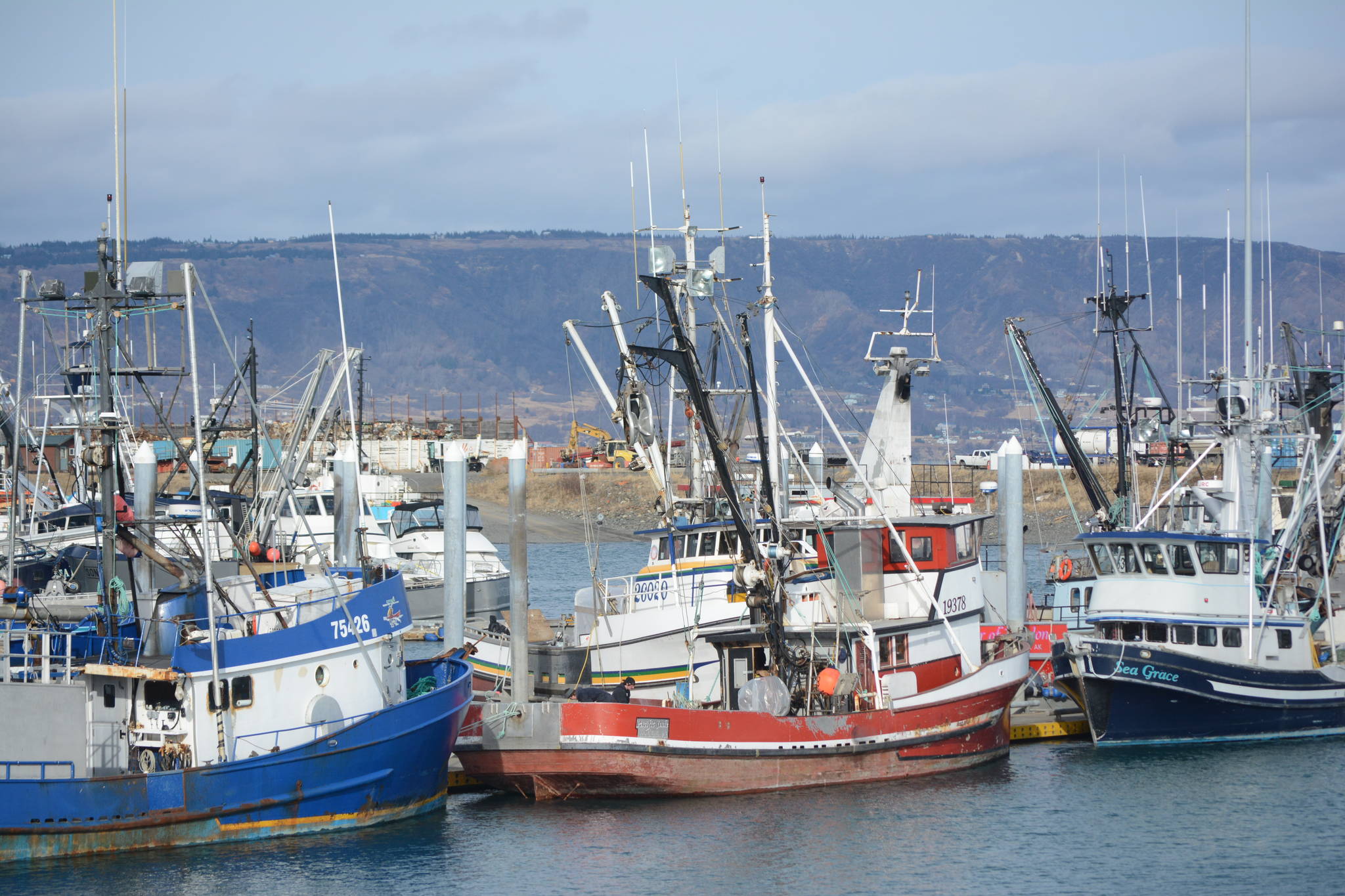Bering Sea crab fishermen once again have a mixed bag of quotas to look forward to for the 2019-2020 season.
The opilio snow crab quota is set at 34 million pounds, up 24 percent from last season, but last season’s quota was the lowest since 1971 and had dropped precipitously for the previous four years.
While the opilio season opens October 15, most boats do not key on the fishery until after January 1.
The Bristol Bay red king crab season also opens October 15 with a quota of 3.8 million pounds, down from 4.3 million pounds last season. There were doubts about the possibility of having a season last year, so it was curious that the lower stock assessment led to a fishery.
Miranda Westphal, area management biologist for the Alaska Department of Fish and Game in Unalaska, explained that there are two switches that can turn the fishery on or off, both being threshold levels at which the fishery cannot recover from.
The first is mature female abundance, which is 8.4 million pounds, and which has been on the decline. This year’s mature female count was still in decline but was above the threshold at 10.6 million pounds of mature females.
The other threshold is mature males and females together in what is known as effective spawning biomass. That threshold stands at 14 million pounds, and the current biomass stands at 28 million pounds.
Last season the quota was down 36 percent from 2017, when mature males dropped more than 40 percent and mature females were down around 54 percent.
As recently as 2014 that quota was still inching up, with a gain of 8 percent that year, and a quota of 10 million pounds. The previous year saw a quota increase of 9 percent, settling at 7.8 million pounds.
However, Westphal said that the fishery is still in decline, with few “recruits” showing up in the harvest.
“I think a closure is still on the table for the next couple seasons,” she said, due to the lack of recruitment.
She said that although there are dramatic changes happening in the water temperatures in the Bering Sea, she is not aware of any changes to the area that the National Marine Fisheries Service uses to conduct the surveys.
Those surveys cover pollock, cod, flatfish and crab as the main species, which is done on a comprehensive grid that covers the Bering Sea shelf all the way up to the Arctic line, so there might not be much that could change.
The big disappointment for this season is the closure of the bairdi Tanner crab fishery, which was open last year west of 166 degrees longitude, the dividing line for the fishery.
Westphal said that those stocks tend to be “boom or bust,” with them bouncing back and forth between the two areas, east and west of 166 degrees.
“There have been years when both have been closed, or one open and one closed — it can be all over the place,” she said.
ADF&G tracks crab sizes as a means of determining the health of the stocks, and Westphal said that they have noticed some trends.
“Stock by stock, red (king) crab, there’s not a lot of recruitment coming into the system, so there’s not a lot of small crab coming into the population,” she said. “What we believe we have been fishing on is a biomass of males that we have been fishing on for several years.”
She pointed out that king crab do not have what is called a terminal molt, where they molt every year, while bairdi and opilio do, meaning that king crab continue to get larger and heavier, which they have been seeing in the fishery.
“Last year’s (king crab) fishery weight average was 7.1 pounds, the year before that was 6.8, the year before that was 6.7, so they’re getting bigger as the years go on,” she said, pointing to an older population with fewer young crab becoming legal size.
For Tanner crab, the size has been fairly steady, partly because there is an industry size preference, so smaller crab are thrown back.
Cristy Fry can be reached at realist468@gmail.com



